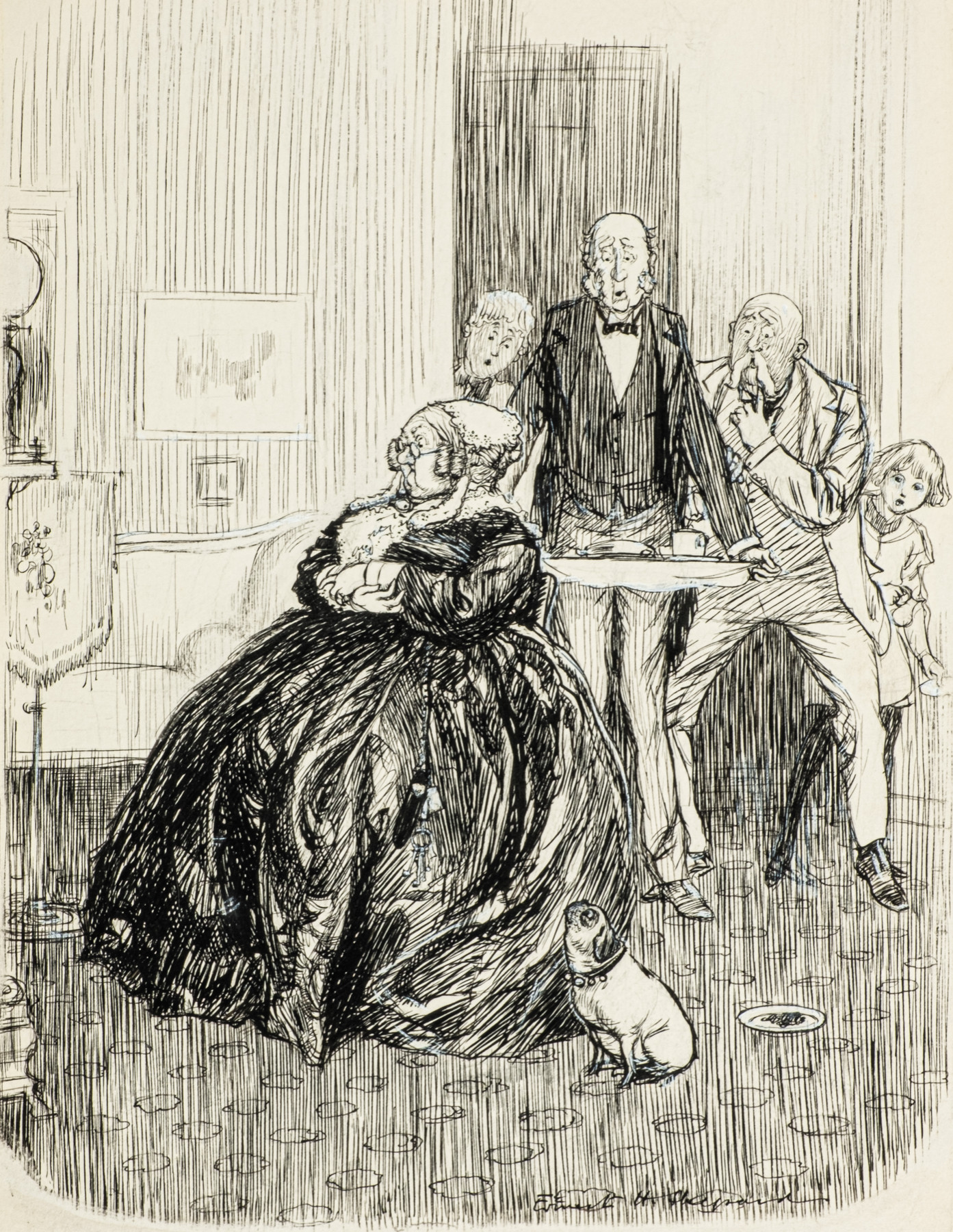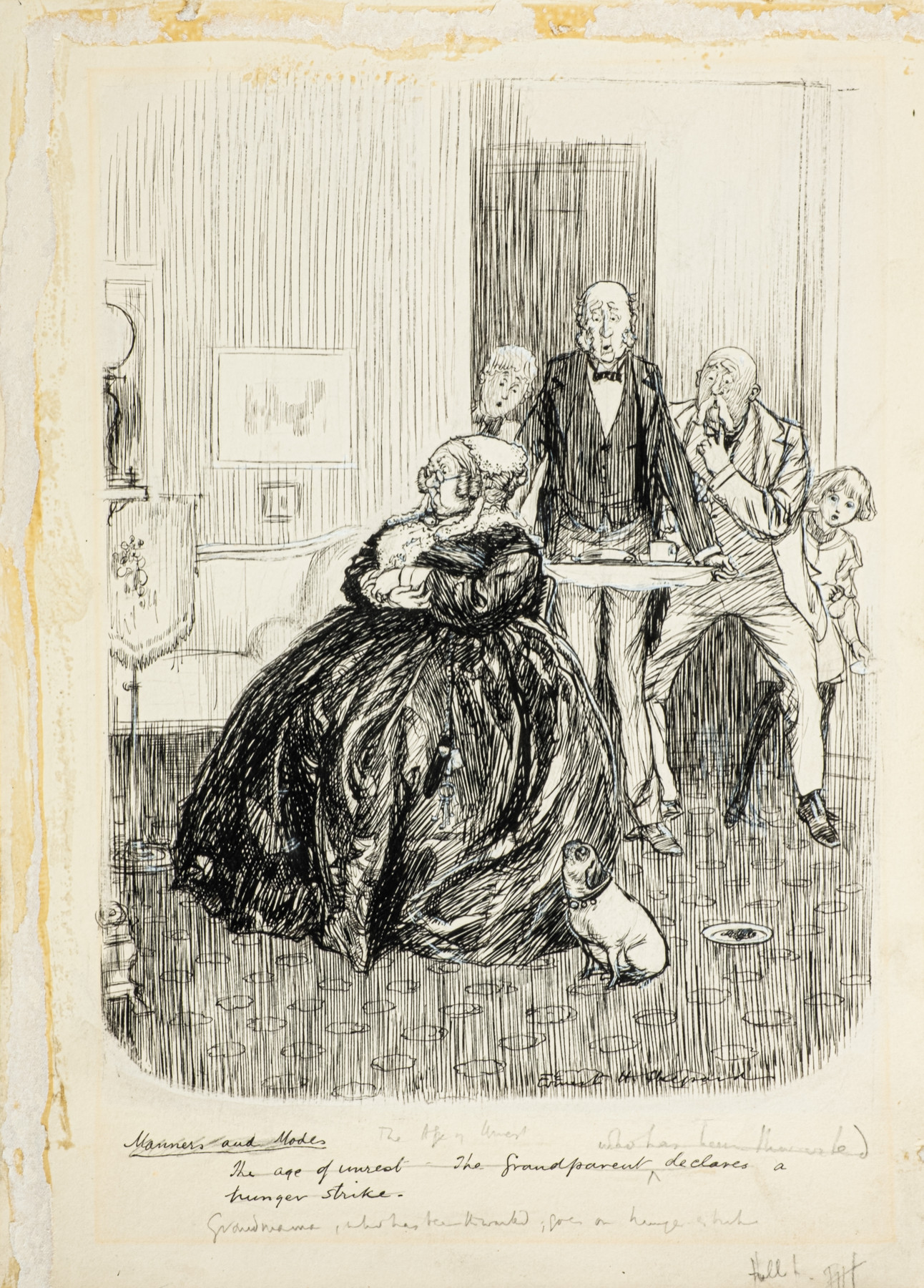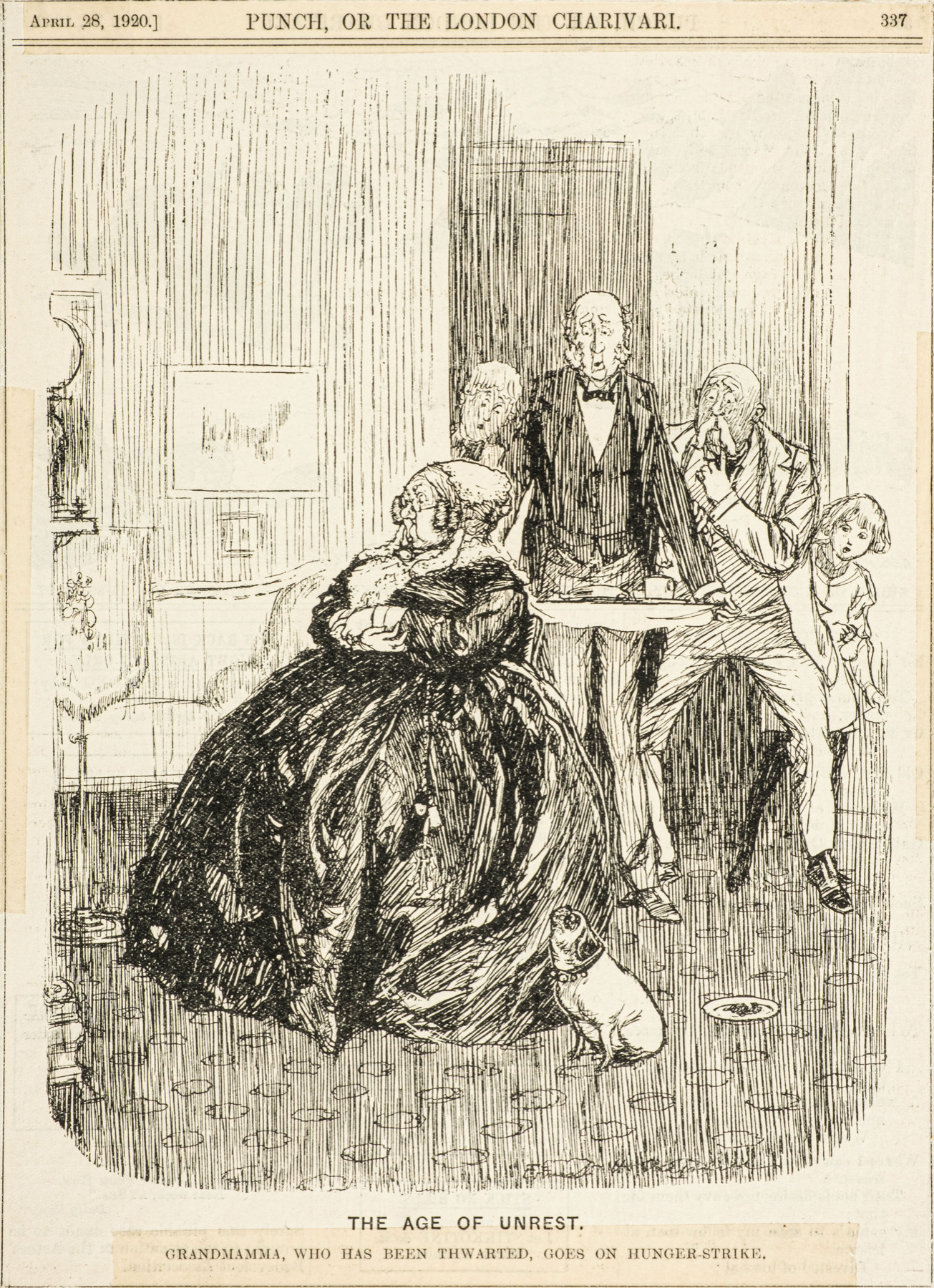


Published at a time of considerable political unrest in Ireland, E H Shepard’s image of ‘Grandmamma’, a recurring figure in many of his cartoons, references to the increasing use of the hunger strike as a tool of political resistance during this period.
In 1917, the Irish volunteer leader Thomas Ashe had died after being force fed during a hunger strike in Mountjoy Gaol, Dublin. After Ashe’s death, the remaining striking prisoners were granted political status that ended the hunger strike. On 3 March 1920, a man named William O’Brien, an official of the Irish Transport and General Workers’ union, was arrested and deported to Wormwood Scrubs. On 18 March he went on hunger strike and, after the case was raised in Parliament by the Irish Labour Party, he was released on 26 March. Perhaps inspired by O’Brien’s example, Irish Republican prisoners in Mountjoy Gaol, led by Peader Clancy, went on hunger strike. On 5 April, 36 men refused food, followed by 30 more the following day, and by 9 April, 90 men were on hunger strike.
Within a few days, up to 20,000 people had congregated outside Mountjoy Gaol, demonstrating for their release. This was followed on 13 April by the calling of a general strike by the Irish Trade union Council. Across Ireland, public transport stopped running, pickets forced most shops to close and mass protests were held. As a consequence, the British eventually agreed the release of hundreds of political prisoners across Ireland on 14 April. On 21 April, the Irish Republican prisoners at Wormwood Scrubs also went on hunger strike and shortly after, were also granted their release.